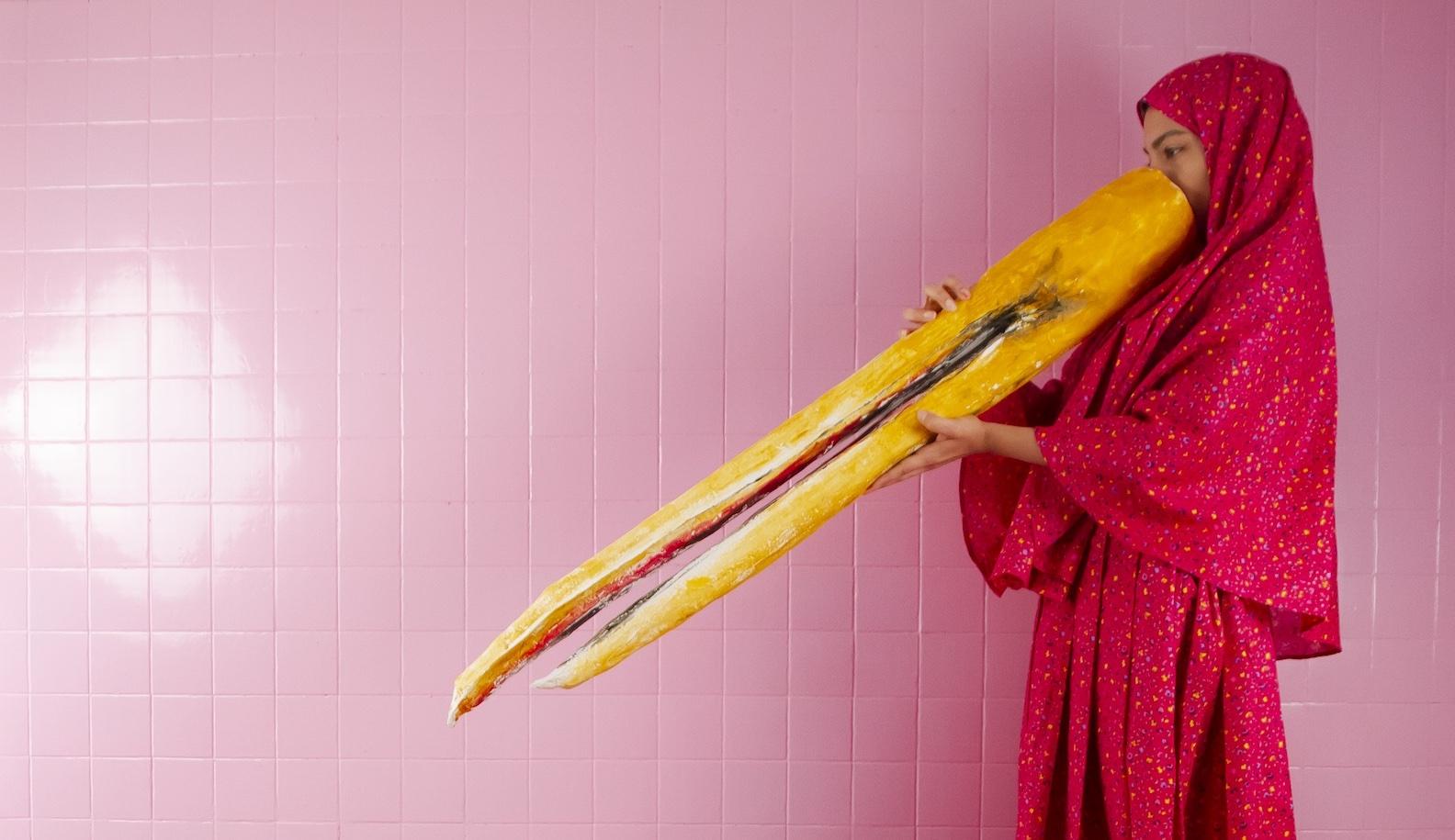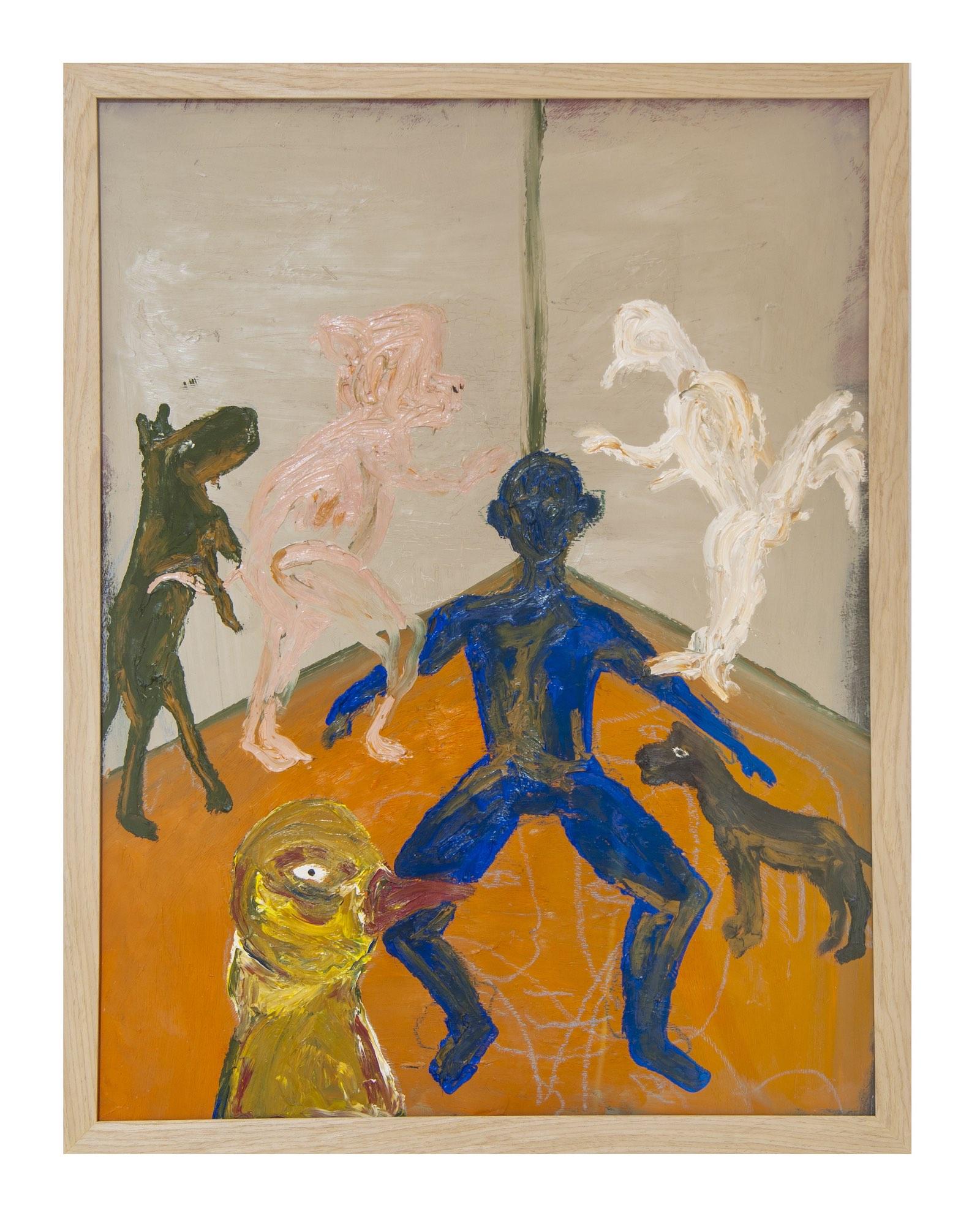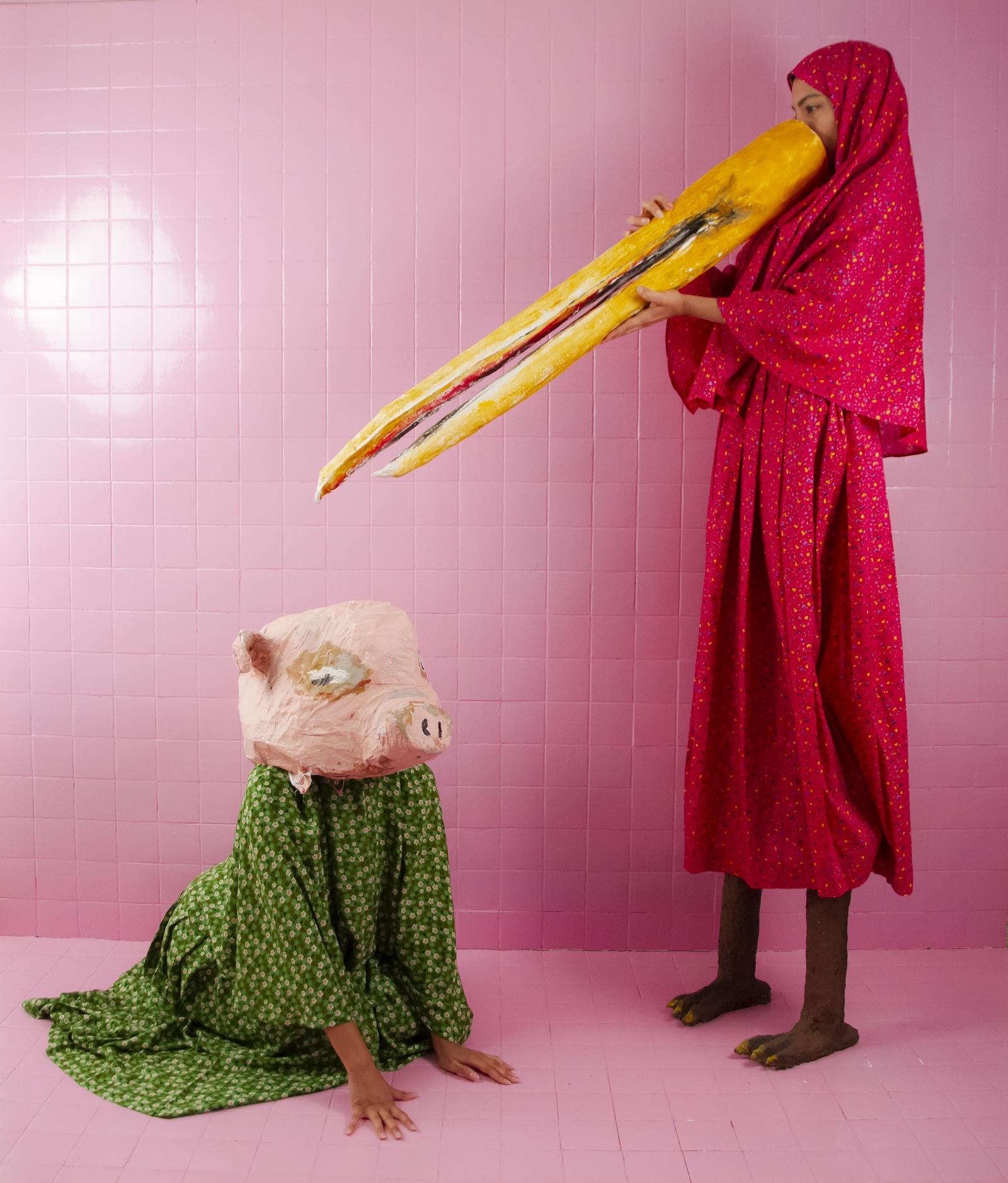SB: Going back to the beginning, I wondered if you could tell me what made you want to become an artist? When did you start thinking of yourself as an artist?
MA: I was interested in penning a novel when I was younger but after failed attempts to publish one, I became immersed in art-house cinema, films by the likes of David Lynch and Sergei Parajanov in particular. This led me to screenplay writing and later, a focus on theatrical codes more broadly. I started to make characters from found objects, which I would coat in plaster and paint.
I made animals and anthropomorphic beings and transformed them into my own tableaux. I moved them around and used them to play out moments from my past or current concerns. This process helped me to regain control over my world. My art continues to be narrative, a diary of sorts.
SB: Your works often feature theatrical elements, including puppet-like or costumed figures that often feel surreal. At their center, the works become about storytelling—what draws you to narrative? And how do you find the balance between narrative and ambiguity?
MA: My art is an opportunity to make sense of the questions that come up in life, regarding society, structures, rules, and ideas about social constructs such as right/wrong, sin and purity among other preoccupations. My art might extend to various audiences but I communicate from an intimate and subjective space that’s why I often appear in my art as a performer and character. Each of my characters is a fragment of myself.
































